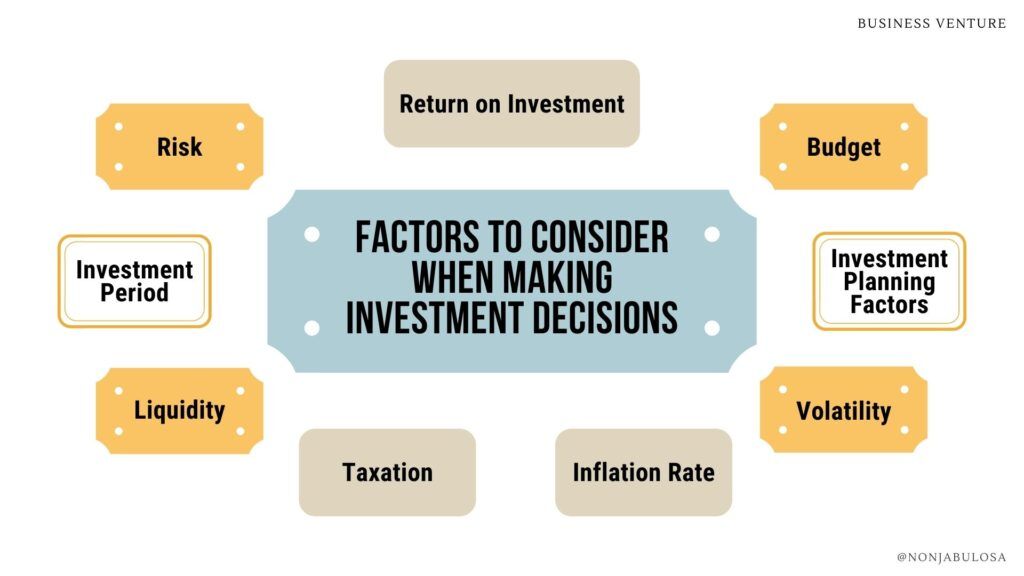Amur Capital Management Corporation Things To Know Before You Buy
Amur Capital Management Corporation Things To Know Before You Buy
Blog Article
Some Ideas on Amur Capital Management Corporation You Need To Know
Table of ContentsThe 10-Second Trick For Amur Capital Management CorporationFascination About Amur Capital Management CorporationWhat Does Amur Capital Management Corporation Mean?Amur Capital Management Corporation - The FactsThe Of Amur Capital Management CorporationNot known Facts About Amur Capital Management CorporationNot known Factual Statements About Amur Capital Management Corporation
That single sentence could apply to the job of choosing your investments. Right here are some standard ideas any investor need to recognize if they want to improve the performance of their investment choice.Offer your money time to grow and compound. Establish your risk resistance, after that select the sorts of financial investments that match it. Learn the 5 essential facts of stock-picking: returns, P/E ratio, beta, EPS, and historical returns. The Pareto Concept is a practical principle to remember when beginning a task that incorporates a huge quantity of info, such as the subject "how to select your investments." In numerous facets of life and learning, 80% of the results originate from 20% of the effort.
The Definitive Guide to Amur Capital Management Corporation
You require to commit to a time period during which you will leave those investments unblemished. An affordable price of return can be expected only with a lasting horizon. When investments have a very long time to value, they're more probable to weather the inevitable ups and downs of the equities market.
Another important factor to leave your financial investments untouched for several years is to take advantage of worsening. When you begin making cash on the money your financial investments have actually currently made, you're experiencing compound development.
Amur Capital Management Corporation for Beginners
They get the benefit of worsening development over a longer time period. Asset appropriation implies putting your financial investment capital right into a number of kinds of investments, each representing a percent of the whole. Designating possessions into different classes that are not highly correlated in their cost activity can be an extremely effective method of branching out risk.
If you want to expand your profile additionally, you may increase past those 2 courses and include property financial investment trusts (REITs), assets, foreign exchange, or worldwide stocks. To know the right allotment method for you, you need to recognize your resistance for threat. If momentary losses maintain you awake during the night, concentrate on lower-risk choices like bonds (capital management).
Some Known Details About Amur Capital Management Corporation

Nobel Champion economic expert Harry Markowitz described this incentive as "the only complimentary in money - https://www.figma.com/design/XeqQcdhj8eoY5tmhLzStOZ/Untitled?node-id=0%3A1&t=kpos8MICuVrp9Mr9-1. investment." You will certainly earn a lot more if you diversify your profile. Below's an instance of what Markowitz implied: An investment of $100 in the S&P 500 in 1970 would have expanded to $7,771 by the close of 2013
Now, envision you take on both strategies. If you had spent $50 in the S&P 500 and the other $50 in the S&P GSCI, your overall financial investment would certainly have grown to $9,457 over the very same period. This suggests your return would have surpassed the S&P 500-only portfolio by 20% and be nearly dual that of the S&P GSCI performance.
Facts About Amur Capital Management Corporation Uncovered

Every little thing else takes extremely specialized understanding. If you're a professional on antique Chinese porcelains, go all out. If you're not, you're better off sticking with the fundamentals. If a lot of financiers can reach their objectives with a combination of stocks and bonds, then the supreme concern is, just how much of each class should they choose? Let background be an overview.
The fact is, the complete return on stocks historically has been a lot greater than for all other asset courses. In his book Stocks for the Long term, author Jeremy Siegel makes a powerful instance for creating a profile consisting mostly of stocks. His reasoning: "Over the 210 years I have examined supply returns, the real return on an extensively diversified profile of supplies has actually balanced 6. alternative investment.6% each year," Siegel claims
Amur Capital Management Corporation Things To Know Before You Buy
"At the end of 2012, the yield on small bonds was about 2%," Siegel notes. "The only way that bonds could create a 7.8% real return is if the customer cost index fell by almost 6% per year over the next 30 years.
Case in point: At a rate of 3% rising cost of living per year, $100,000 will deserve simply $40,000 in thirty years. Your age is as relevant as your individuality. As you obtain closer to retired life, you should take less dangers that could jeopardize your account equilibrium simply when you need it.
Amur Capital Management Corporation Can Be Fun For Anyone
:max_bytes(150000):strip_icc()/investing.asp-final-9cbfccbd50344a828ddf1882a2fdc07c.png)
In maintaining with the Pareto Principle, we'll consider the five most crucial aspects. The regularity and quantity of the returns are subject to the firm's discretion and they are greatly driven by the company's monetary efficiency.
Report this page